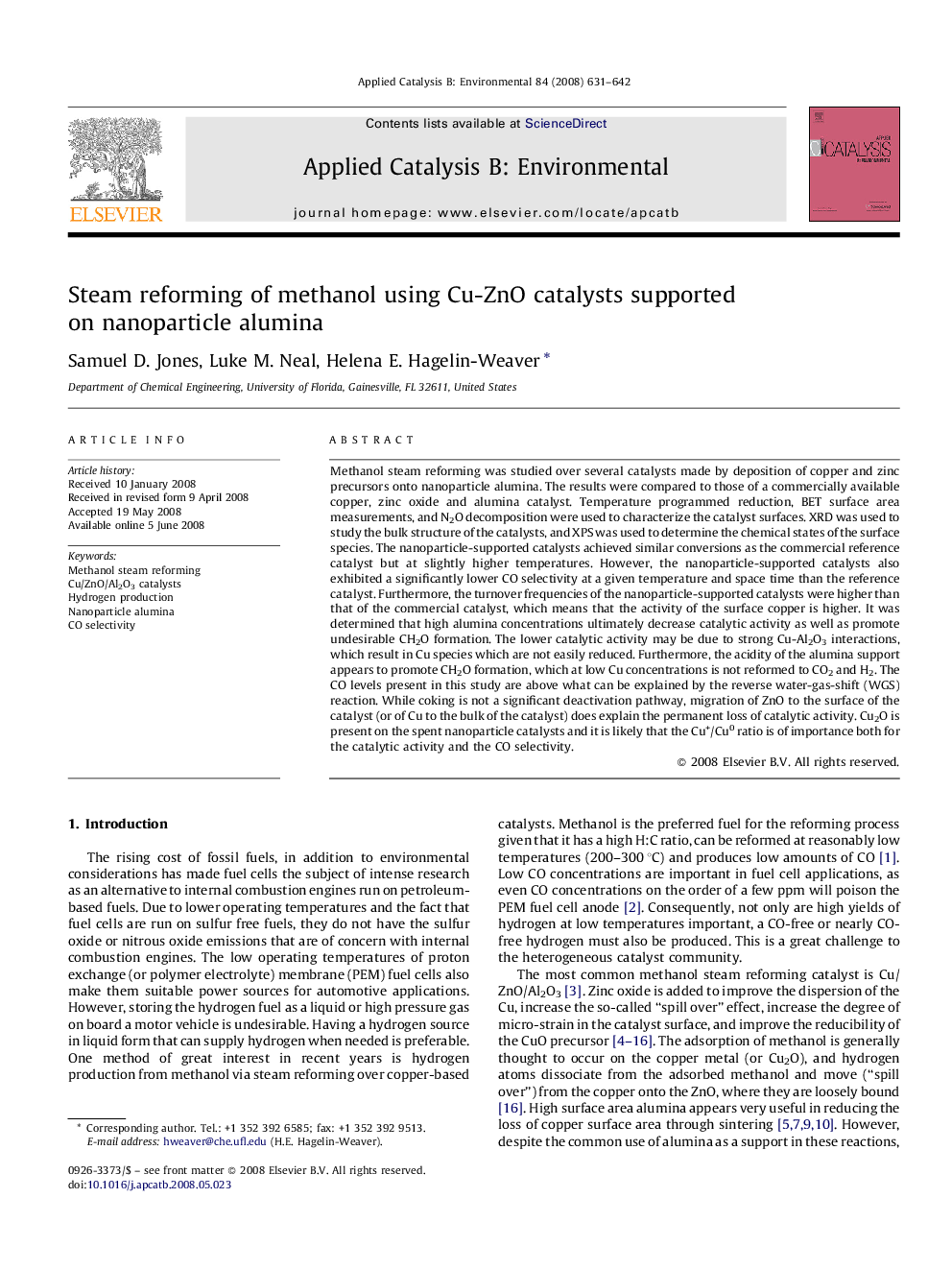| کد مقاله | کد نشریه | سال انتشار | مقاله انگلیسی | نسخه تمام متن |
|---|---|---|---|---|
| 48201 | 46496 | 2008 | 12 صفحه PDF | دانلود رایگان |

Methanol steam reforming was studied over several catalysts made by deposition of copper and zinc precursors onto nanoparticle alumina. The results were compared to those of a commercially available copper, zinc oxide and alumina catalyst. Temperature programmed reduction, BET surface area measurements, and N2O decomposition were used to characterize the catalyst surfaces. XRD was used to study the bulk structure of the catalysts, and XPS was used to determine the chemical states of the surface species. The nanoparticle-supported catalysts achieved similar conversions as the commercial reference catalyst but at slightly higher temperatures. However, the nanoparticle-supported catalysts also exhibited a significantly lower CO selectivity at a given temperature and space time than the reference catalyst. Furthermore, the turnover frequencies of the nanoparticle-supported catalysts were higher than that of the commercial catalyst, which means that the activity of the surface copper is higher. It was determined that high alumina concentrations ultimately decrease catalytic activity as well as promote undesirable CH2O formation. The lower catalytic activity may be due to strong Cu-Al2O3 interactions, which result in Cu species which are not easily reduced. Furthermore, the acidity of the alumina support appears to promote CH2O formation, which at low Cu concentrations is not reformed to CO2 and H2. The CO levels present in this study are above what can be explained by the reverse water-gas-shift (WGS) reaction. While coking is not a significant deactivation pathway, migration of ZnO to the surface of the catalyst (or of Cu to the bulk of the catalyst) does explain the permanent loss of catalytic activity. Cu2O is present on the spent nanoparticle catalysts and it is likely that the Cu+/Cu0 ratio is of importance both for the catalytic activity and the CO selectivity.
Journal: Applied Catalysis B: Environmental - Volume 84, Issues 3–4, 1 December 2008, Pages 631–642